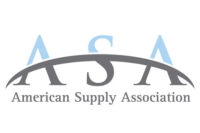For the past 34 years, the annual ASA OPR (i.e., ASA Operating Performance Report) has been an invaluable tool for providing industry benchmarks against which to gauge your own firm’s performance.
While “fine-tuning” operations for greater efficiency certainly provides near-term incremental profitability advantages, eventually a lack of innovation can result in a company’s demise. Only through “innovation” are the greatest sales and profitability gains possible, as suggested by the following axioms of business:
When is innovation vs. simply greater efficiency needed?
Fortunately, the ASA OPR is much more than just a tool for tweaking operating “efficiency.” A good way to assess where “innovation” is needed, rather than simply implementing “efficiency” improvements, is based on how your company compares to the industry norms, as follows:
Company profitability performance is:
-
Substantially below industry norms and this situation has persisted for a long time.
-
Substantially above industry norms and this has consistently continued.
-
Declining, even while comparing favorably to industry norms.
-
Historically in the middle of industry norms.
Key performance components for innovation:
Expenses, Personnel, Inventory, Accounts Receivable, Sales Growth.
-
Innovation definitely needed.
-
Continued efficiency is the goal.
-
Innovation is probably needed.
-
Short-term efficiency will definitely help, but long-term innovation is needed.
What is innovation and how to achieve it?
Within a company, “innovation” usually involves a new way of doing something (such as new management systems, compensation plans, organizational structure, etc.), or it may mean defining new markets or supply sources. However, a key determinant for deciding what specific areas of your business can have the most dramatic impact on profits, and thus are prime candidates for innovation, comes from what has been historically learned from the ASA OPR. In particular, each year’s OPR includes a special analysis that compares the performance of the most profitable firms, vs. other companies in the industry. Year in and year out, the same components for success are true, as listed below:
-
Expense management is key.
-
Sales growth is important.
-
Gross margins are not necessarily important, but the combination of gross margin, inventory turnover and the resulting GMROI is important.
-
Personnel management is always a key component for success.
-
The basics of accounts receivables management is always important.
Examples of business innovation
While doing things better and different (i.e., the essence of innovation) is not necessarily easy, it is doable if you are
“open and committed” to change. Some real-world examples of companies that
have identified and implemented successful innovation strategies, as well as some unsuccessful innovations, include:
Establishing a corporate culture to promote innovation
Probably the first step for identifying innovation opportunities is to simply be open to change from the top down within your company. Executives at the highest level need to be willing and ready to listen to employees, customers, suppliers and markets for new opportunities, and then objectively assess those ideas for further investigation and possible implementation. In other words, a company should avoid complacency, and always should challenge itself to adapt and improve.
Earning and growing profits due to innovation is the criteria for success, rather than simply more revenue dollars that are eroded through higher expenses.
Summary and Conclusions
In summary, the long-term success of any company depends on the company’s ability and willingness to adapt and evolve as its business environment changes. Successful strategies of the past do not necessarily translate into the best way to operate in the future. If you are consistently highly profitable, then you should use the OPR to continually monitor and fine-tune your business. However, if your profitability has stagnated, or even declined, it is time to look for new and better ways to operate. Remember, as Plato taught in 347 B.C., “necessity is the mother of invention,” but doing nothing may mean the eventual demise of your company.
Successes
Google: Allows up to 20% of employee time dedicated to developing personal projects.
- Employee Paul Buchheit created Gmail, the first email with a successful search feature and the option to keep an essentially unlimited number of emails (i.e., 1 GB).
Lockheed Martin: Allowed Clarence “Kelly” Johnson to work as an autonomous organization (called Skunk Works), with a small, focused team.
- Created some of the most innovative aircraft models, including the SR-71 Blackhawk. Johnson demonstrated what an innovative employee can accomplish, if allowed to flourish without bureaucratic restrictions.
IBM: Traditionally, a mainframe computer manufacturing company. Today, IBM no longer makes computers.
- As personal computers (i.e., PCs) became widely popular, and a hugely competitive business, IBM reinvented itself by becoming the world’s largest multinational technology consulting organization.
Failures
General Motors Chevy Volt: An innovative alternative energy (i.e., electric) car
- Due to a very limited range, high production costs and a high selling price, the long-term cash flow losses promised to be huge (even with government subsidies). As a result, GM re-introduced the Chevy Volt as an electric/gas hybrid car in an attempt to compete with the successful, already existing hybrid cars.
Wind Turbines: Touted as a strong “green” renewable electric energy source.
- The cost to produce wind power electricity (i.e., the $ cost per MWH, or megawatt hour) is as much as 25 times that of other energy sources (without the government subsidies). Wind power currently provides less than 2% of the nation’s electricity.
Blockbuster: Had more than 6,000 stores at its peak.
- Was late to respond to the emergence of video streaming; filed for bankruptcy in 2010 and today has less than 60 remaining stores.



